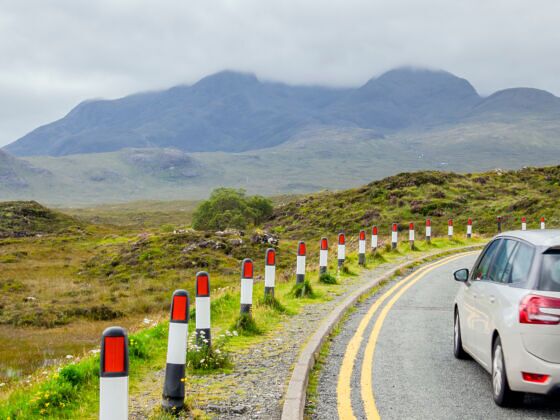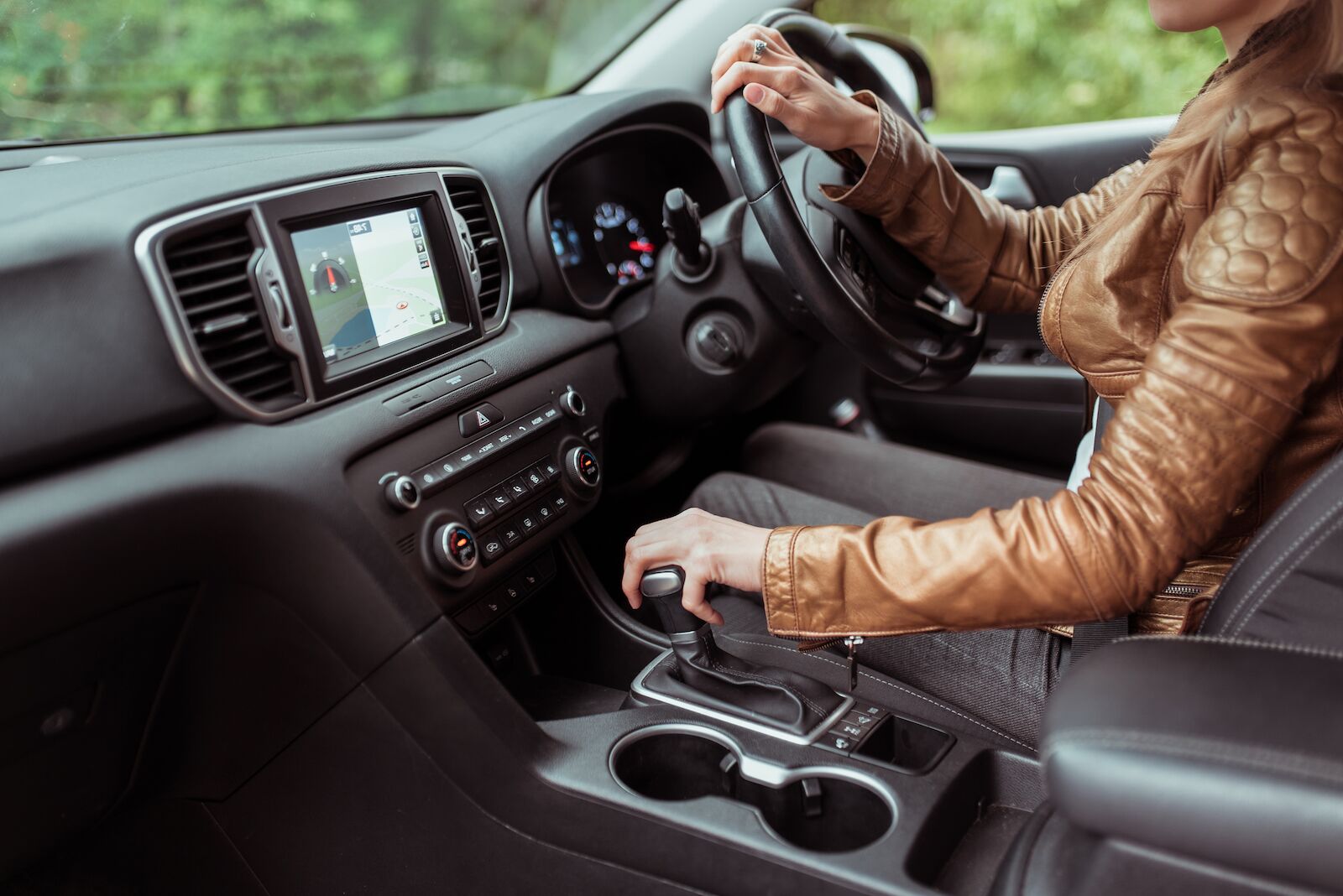When I was just 22 and lived and worked as a French language teacher in Ireland, my good friend Lars, who taught German and lived in the same small town as I did, died in a car accident. Lars was 24. In an attempt to be more independent and explore the country freely, he had brought his red Toyota Yaris from Germany after the Christmas break just two weeks before. I had traveled with him part of the way from continental Europe, along with another friend of ours, Stephanie, and a friend of his from Germany, Stefan. I remember all of us squeezed in the small two-door car, driving through the night on Ireland’s small, twisty roads. I don’t recall being scared with him behind the wheel, even though I knew he had no experience driving on the left side of the road. About 15 days after our arrival, on January 10, 2007, Lars took his car to take Stefan to the Dublin airport so he could catch his flight back to Germany. They left at 4 AM when the roads were quiet for the 1.5-hour drive. Less that 20 minutes after they departed, Lars forgot he was supposed to drive on the left side of the road and hit a truck coming the other way. He died instantly and his friend was seriously injured. Months after the accident, Stefan, then in his mid-twenties, was still working to re-learn how to speak, read, write, and walk.


8 Tips and Tricks You Need to Know Before Driving on the Left Side of the Road
Driving on the left side of the road when you’re not used to it is not an easy task. Even if you feel confident about your abilities and have extensive driving experience, it requires serious preparedness and a high level of alertness. Here’s what driving experts have to say about what you should do to be ready and stay safe when driving on the left side of the road.
Rent the right car

Photo: byswat/Shutterstock
Unless you’re bringing a left-hand drive vehicle with you (say, if you’re coming from continental Europe), you’ll have to rent a right-hand drive one on site. If you don’t feel confident shifting gears with your left hand, make sure to rent an automatic vehicle rather than a manual. You’ll be more comfortable and able to focus on the road rather than on the gear-shifting process.
If you can’t rent an automatic vehicle, Amanda Benson, owner of the blog Dusty Trail RV, full-time RVer, and a lifetime traveler, recommends that you “spend some time getting to know the vehicle’s layout before hitting the road. Remember, the gear shift will be on your left. Consider spending at least 30 minutes familiarizing yourself with the vehicle’s controls [pedals, lights, indicators, windshield wipers, etc.] and features before driving.”
Joe Giranda, the Director of Sales & Marketing for CFR Classic, a company specializing in international car shipping and relocation, suggests that you rent a car with a GPS. “GPS devices can be invaluable in helping you navigate unfamiliar territory, reducing the cognitive load of driving and allowing you to focus more on adapting to the new driving environment,” he explains.
Renting a vehicle with cruise control and lane-keep alerts will also allow you to drive at the appropriate speed and stay in your lane. Just make sure you know how to use the those tools prior to setting off.
Ready yourself for the new experience
You can prepare yourself even before going to the country where you’ll have to drive on the left side of the road. While planning your trip, watch explanatory Youtube videos and ask the car rental agency or your insurance for possible literature they might have on the topic. Take the time to look at how the rules of the road and the signage differ in the country where you’re going prior to your trip. Learning those things on the go will only make you feel overwhelmed and distracted.
Once you have your rental vehicle and have spent a good amount of time familiarizing yourself with all its buttons, control sticks, and other features, you need to carve a couple of hours to practise.
Rose Smith, owner of Winston Express Haulage in Australia, recommends “exercising in a parking lot or on calm suburban streets [to] assist you in acclimating to the demands of heavy traffic.” Blake Shaw, the automotive expert, car enthusiast, and blog author at the All About Wheels blog echoes smith’s advice and explains that “to feel safe, you need to have confidence, which you can gain through practice. Start driving during less busy times of the day and stay away from busy areas until you feel ready.”
If it’s all too much for you but you have time to spare, Noman Kenneth from UK car leasing company LeaseLoco, recommends “reaching out to a driving instructor for a refresher lesson.”
Adjust your mirrors
Small things can make a world of difference when adapting to driving on the left side of the road, including adjusting your mirror. Beson explains that “properly adjusting your mirrors can help compensate for the changed perspective.” She recommends checking and adjusting mirrors every 15 minutes during the first few hours of driving.
Use visual reminders
One of the most difficult aspects of driving on the opposite side of the road is to remember to stick to the left. Fatigue, distraction, and unfamiliar roads can lead drivers to forget that they should stay on the left-hand side. Giranda explains that “some drivers find it helpful to place a small sticker or note on their dashboard as a continual reminder to stay on the left side of the road.”
Don’t drive alone
Better than a sticker, a co-pilot will not only keep you awake and alert, but they will remind you to stay on the left side of the road and will take care of everything else while you’re focusing on driving.
Arturo, Travel vlogger at Dashing Elsewhere, explains that “it takes a little time for your spacial awareness to adjust. It’s very easy to hit something with the left side of the car when you’re not used to sitting on the right. A co-pilot will be able to help you gauge distances while you adjust. A co-pilot will also be able to navigate where you need to go, change music in the car, warn you of dangers, etc.”
Avoid the distractions until you feel confident
to stay focused on the task at hand, whether that be sticking to the left, finding your way, managing heavy traffic, driving on unfamiliar roads, or even driving at night, avoid distractions like loud music or podcasts. Sturgeon Christie, CEO of Second Skin Audio which manufactures audio control equipment for cars, recommends “staying away from podcasts on meatier topics, as well as from new music or releases. These are more likely to pull your attention away from the road, and require more thinking and immersion when you really just want to stay in the present.”
Don’t drive when you’re tired
Because driving on the left side of the road isn’t what you’re used to doing, if you do it in a state of tiredness, you’re more likely to make mistakes, such as veering to the right, which can be potentially disastrous. When you feel like your attention is waning, stop and rest. Note that because driving on the left side of the road requires a lot of cognitive effort, you’ll tire out more quickly so don’t plan hours-long drive without breaks.
Watch out for roundabouts
Roundabouts, while not very common in North America, are just about everywhere in the UK, Ireland, and other countries where people drive on the left side of the road. To eliminate confusion and potential accidents, it is essential that you familiarize yourself with how roundabouts work by learning the answers to the following questions prior to getting behind the wheel of your rental car:
- What does the signage for roundabouts look like and what does it mean exactly?
- Do I come to a full stop at the entry to a roundabout?
- What lane shall I take for what exit?
- How and when shall I use my indicator?
- Do I yield for upcoming traffic when I am driving around a roundabout?
Once you understand the mechanics of a roundabout, all you have to remember is that in countries where people drive on the left side of the road, roundabouts operate clockwise.
Which countries drive on the left side of the road?
In Europe:
- United Kingdom (England, Scotland, Wales, Northern Ireland, as well as island like Guernsey, Jersey, and the Isle of Man)
- Ireland
- Malta
- Cyprus
In the Caribbean:
- U.S. Virgin Islands
- Jamaica
- Antigua and Barbuda
- Bahamas
- Barbados
- Dominica
- Grenada
- Montserrat
- St. Kitts and Nevis
- St. Lucia
- St. Vincent and the Grenadines
- Trinidad and Tobago
In South America:
- Guyana
- Suriname
In Asia:
- Japan
- Singapore
- Maldives
- Thailand
- Indonesia
- Malaysia
- Hong Kong
- India
- Bangladesh
- Bhutan
- Brunei
- East Timor
- Macau
- Nepal
- Pakistan
- Sri Lanka
In Oceania:
- Australia and its territories (Christmas Island, Cocos Islands, and Norfolk Island)
- New Zealand and its territories (Cook Islands, Niue, and Tokelau)
- Fiji
- Papua New Guinea
- Samoa (since 2009 only)
- Tonga
- Kiribati
- Nauru
- Solomon Islands
- Tokelau
- Tuvalu
In Africa
- South Africa
- Kenya
- Mauritius
- Botswana
- Namibia
- Seychelles
- Eswatini
- Lesotho
- Malawi
- Mozambique
- Tanzania
- Uganda
- Zambia
- Zimbabwe
Note that people also drive on the left in the following inhabited British Overseas Territories: the Falkland Islands (South America), St. Helena (Africa), Ascension Islands (Atlantic), Tristan da Cunha island (Atlantic), Anguilla (Caribbean), Montserrat (Caribbean), Turks and Caicos (Caribbean), Bermuda (Caribbean), Cayman Islands (Carribean), Pitcairn Islands (Oceania), and the British Virgin Islands.